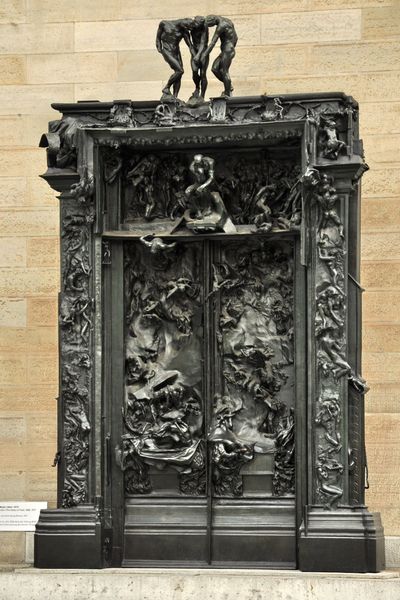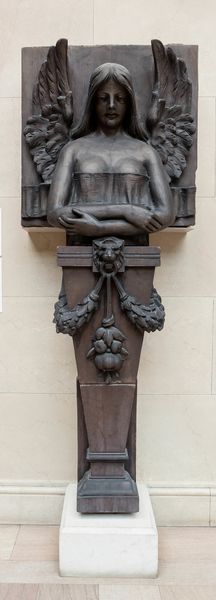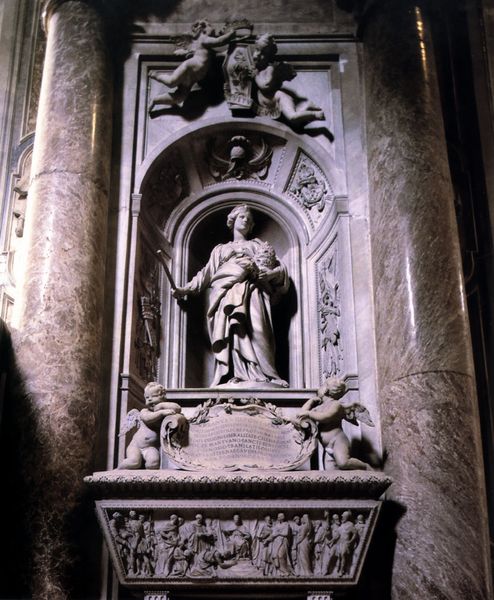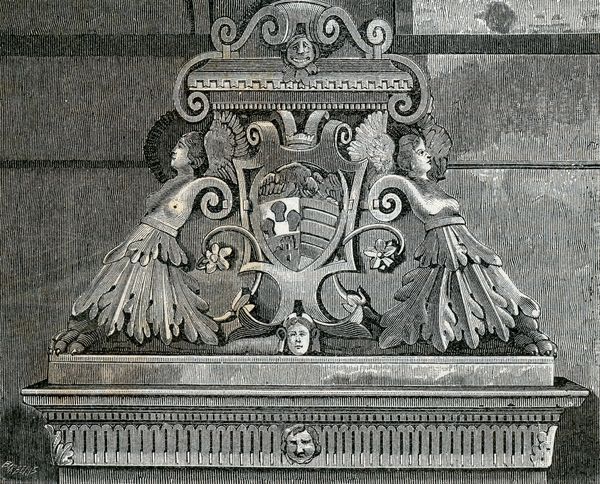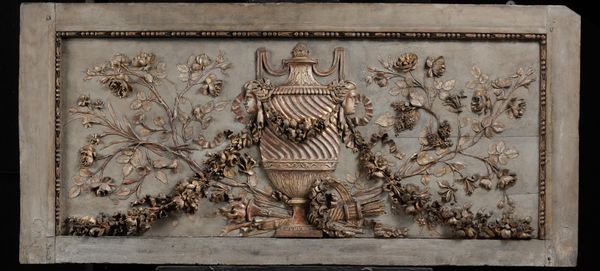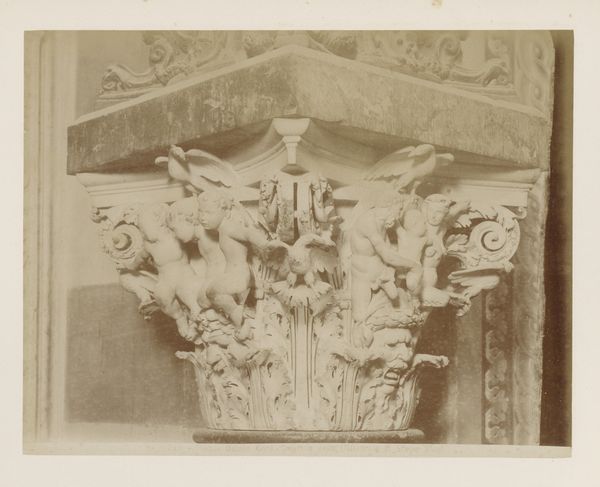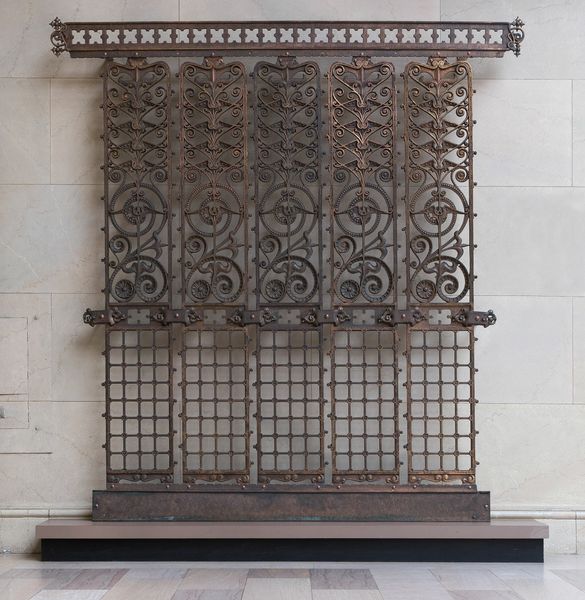
Copyright: Public domain
Curator: Let's examine Rodin's "The Gates of Hell," conceived around 1880, but cast in bronze posthumously around 1917. It’s quite imposing, isn't it? Editor: It definitely is. I'm immediately struck by the sheer chaos of it all. There's so much going on; it feels overwhelming. What do you see in this piece, focusing on its artistic composition? Curator: I observe a densely populated surface where figures writhe in a perpetual state of torment. Note Rodin's masterful use of layering. The high relief creates strong contrasts of light and shadow, amplifying the emotional impact. The bronze medium further enhances this dramatic effect, don't you think? Editor: I do. It feels incredibly textured, and the figures seem almost to be emerging from, or sinking back into, the surface. Does this choice of material enhance the emotional impact, contrasting themes such as pain and beauty? Curator: Precisely. Also, observe how Rodin fragments the human form, distorting and exaggerating proportions. These disruptions destabilize classical notions of beauty and order, heightening the sculpture's expressiveness and lending the art an intriguing effect. Editor: So, it’s moving away from traditional sculpture and toward something more emotionally raw? Curator: Consider how the figures interact. They are isolated, yet intertwined, trapped in a collective agony. This conveys a sense of profound existential suffering, highlighting individual struggle against a backdrop of societal decay. Editor: It makes you consider Dante's influence and its relevance to a modern viewer, disconnected from his personal struggles, but still emotionally relevant. Curator: Indeed. The "Gates of Hell" represents a potent exploration of human suffering. Now, consider what other interpretations could arise from the piece’s engagement with form and material. Editor: That's something I'll certainly consider. I am struck by how Rodin plays with surface, dimension, and emotionality, offering so much to unpack. Thanks for your expertise!
Comments
No comments
Be the first to comment and join the conversation on the ultimate creative platform.



